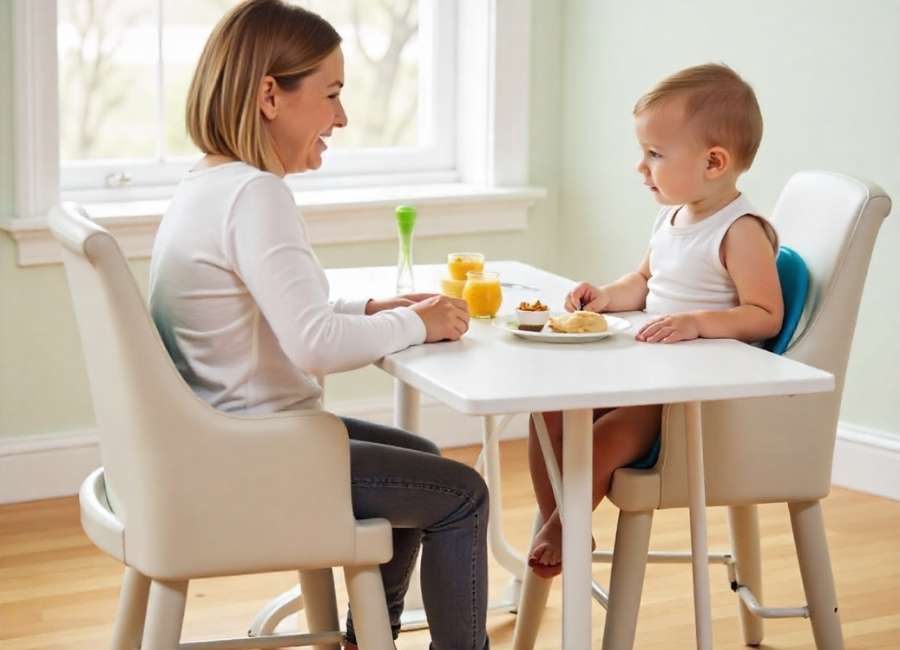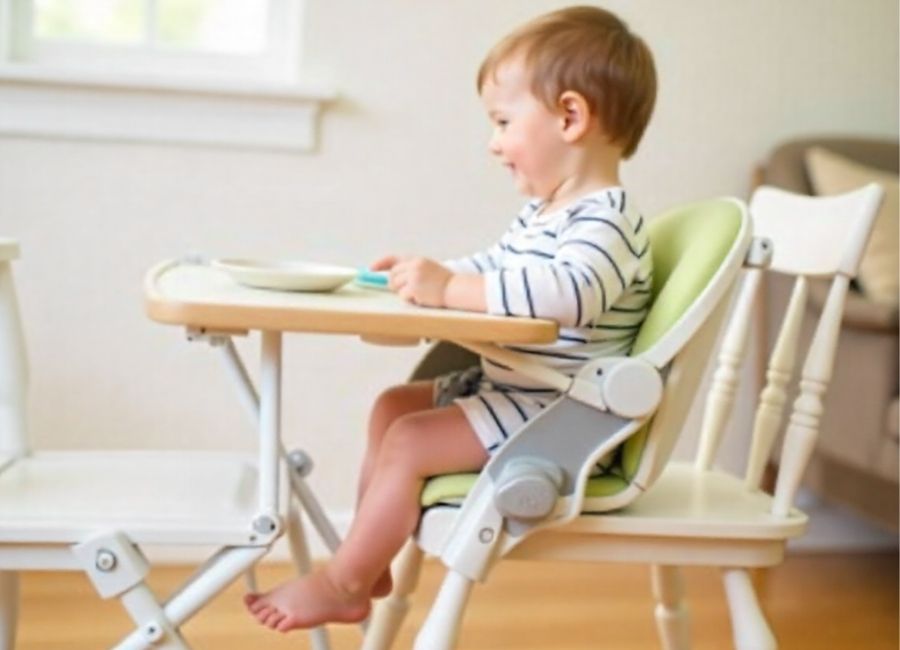As a parent, you track countless milestones: the first smile, the first steps, and the first words. One transition that often gets less attention, but is just as important, is moving your child from a high chair to a regular dining chair. Knowing the right time to make this change ensures your child’s safety and comfort during mealtimes.
This guide provides clear signs that indicate your toddler is ready to move beyond the high chair. We’ll cover the developmental cues to watch for and offer practical steps for a smooth transition to a booster seat or regular chair at the family table.
Key Signs Your Toddler Is Ready

There is no exact age for this transition, as every child develops at a different rate. Instead of focusing on the calendar, look for these clear developmental signs and behavioral cues.
Your Child Is Physically Too Big
One of the most straightforward indicators is size. If your child looks cramped or uncomfortable in their high chair, it’s time for a change.
- Weight and Height Limits: Every high chair has manufacturer-specific weight and height limits. Check the user manual or the manufacturer’s website for these guidelines. Exceeding them can make the chair unstable and unsafe.
- Physical Discomfort: Does your toddler’s head reach the top of the high chair? Are their legs bent uncomfortably? These are clear signs they have outgrown it and need more space.
Your Toddler Can Sit Upright Independently
Proper posture is essential for safe eating. A child who can sit upright without support has the core strength needed to sit safely in a booster seat or chair. (Moore & Theresa, 2023)
- Core Stability: Your child should be able to maintain an upright position without slumping or leaning for the duration of a meal. This stability prevents them from sliding down, which could be a choking hazard. (High Chair Safety, n.d.)
- Balance and Control: Observe if your toddler can sit unsupported on the floor or a small stool without assistance. This demonstrates the balance required for a regular dining chair.
Your Toddler Shows Interest in Joining the Family Table

Behavioral cues are just as important as physical ones. Many toddlers begin to express a desire to be more independent and eat like the “big kids.”
- Mimicking Behavior: Your child may point to the dining chairs, attempt to climb out of their high chair, or exhibit frustration at being separated from everyone else. This is a sign they want to be part of the family mealtime dynamic.
- Expressing Independence: If your toddler resists being buckled into the high chair or actively tries to sit at the main table, they are communicating their readiness for the next step.
Your Toddler Tries to Climb Out
A primary reason to transition away from a high chair is safety. If your toddler has become an escape artist, the high chair is no longer a secure option.
- Safety Risk: A child attempting to climb out of their high chair is at serious risk of falling. Even with a harness, a determined toddler can find a way to wriggle free. (The Ultimate High Chair Buying Guide, n.d.)
- Time for a Change: Once your child starts trying to climb out, it is a clear signal that it’s time to switch to a safer seating arrangement, like a booster seat securely strapped to a dining chair.
How to Make a Smooth Transition

Once you’ve decided the time is right, a few simple steps can make the move from the high chair a positive experience for everyone.
1. Choose the Right Seating Option
You don’t have to move directly to a standard dining chair. Several intermediate options can help.
- Booster Seats: These are a popular choice. A good booster seat straps securely to a regular dining chair and raises your child to the correct height for eating. Look for models with their own safety straps. (15 Best Booster Seats for Dining That Combine Safety and Comfort, n.d.)
- Toddler Towers (Learning Towers): These sturdy structures allow your child to safely stand at counter height. While often used for kitchen activities, they can also work at a breakfast bar. (The First Years Happy Heights High Chair & Toddler Tower – Gray, 2025)
- Adjustable “Grow-With-Me” Chairs: These chairs are designed to adapt as your child grows, converting from a high chair to a toddler chair and eventually a regular seat.
- Child-Sized Tables and Chairs: Providing your toddler with their own small table can foster a sense of independence and is ideal for snacks and crafts.
2. Prioritize Safety
No matter which option you choose, safety remains the top priority.
- Secure Straps: If using a booster seat, ensure it is tightly fastened to the dining chair and that your child is buckled in correctly.
- Stable Chairs: Make sure the dining chair itself is sturdy and cannot be tipped over by a wriggling toddler.
- Supervision: Never leave your child unattended at the table, especially during the early stages of this transition.
3. Involve Your Child in the Process
Make the transition an exciting event rather than an abrupt change. Let your toddler help pick out their new booster seat or have a special “first meal” in their new chair. Positive reinforcement will encourage them to embrace their new role at the family table.
The Next Step in Mealtime Independence
Moving your toddler out of the high chair is a significant milestone that marks their growing independence. By paying attention to their physical and developmental readiness, you can ensure a safe and positive transition. This change allows them to participate more fully in family meals, which is crucial for developing social skills and healthy eating habits. (From First Bites to Family Meals: How High Chairs Encourage Social Interaction, n.d.)











